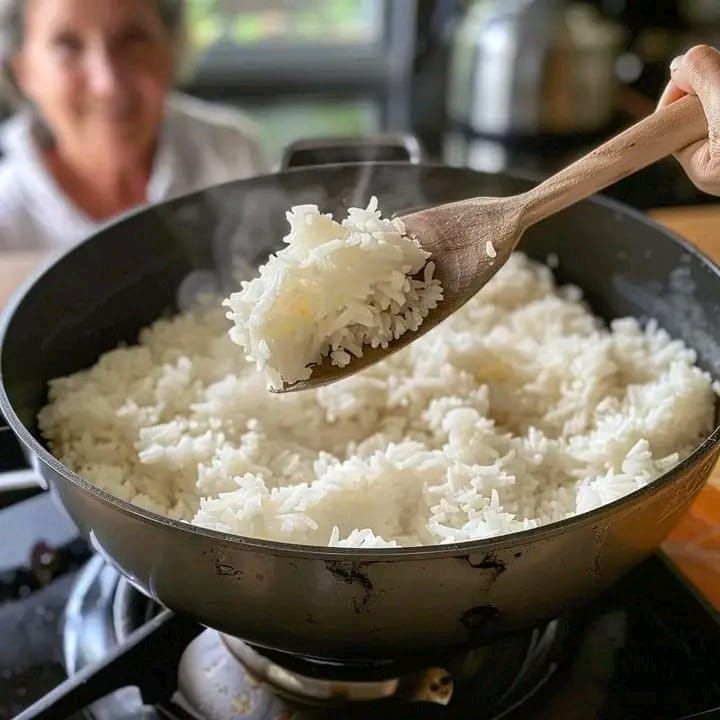ADVERTISEMENT
# The Ultimate Guide to Cooking Rice: Avoiding the Common Mistake of Just Adding Water
Cooking rice may seem like a simple task, but there are several tricks and techniques that can make the difference between a fluffy, perfectly cooked batch and a pot of sticky, overcooked rice. Many people make the common mistake of cooking rice by simply adding water and boiling it, expecting it to turn out well. However, this method is far from ideal and can result in rice that’s either too mushy or undercooked.
In this article, we’ll explore why adding only water to rice is a typical mistake and provide you with all the tips, tricks, and techniques to cook rice perfectly every time. By understanding the science behind rice cooking and learning how to properly prepare different types of rice, you’ll become a pro at cooking rice, transforming your meals into something truly remarkable.
—
## **Understanding Rice: The Basics**
Before we dive into why the common practice of adding just water to rice isn’t ideal, let’s first understand what rice is and why it behaves the way it does when cooked. Rice is a staple food in many cultures around the world, and there are many different types of rice, each with its own unique characteristics. Some of the most common types include:
– **Long-Grain Rice**: This type of rice is known for its fluffy texture when cooked. Popular varieties include Basmati and Jasmine rice.
– **Medium-Grain Rice**: This rice has a slightly stickier texture than long-grain rice but is still relatively separate when cooked. It’s often used in dishes like risotto.
– **Short-Grain Rice**: This type of rice tends to be very sticky when cooked. It’s used in dishes like sushi and rice pudding.
– **Brown Rice**: Brown rice is simply whole-grain rice with the bran layer intact. It takes longer to cook than white rice due to the outer layer.
– **Wild Rice**: Wild rice is technically a grass, not a true rice, but it is often treated similarly. It has a nutty flavor and chewy texture.
Each type of rice has its own ideal cooking method. Some rice types require more water, while others require a slightly different approach. Knowing these differences is key to getting perfect results when cooking rice.
—
## **Why Adding Just Water Can Lead to Mistakes**
When people cook rice by simply adding water, many don’t take into account the variety of rice they are using, the water-to-rice ratio, or the cooking time. Let’s take a closer look at some of the common issues that arise when rice is cooked with just water:
### **1. Water-to-Rice Ratio**
The most common issue when cooking rice is using the wrong water-to-rice ratio. Rice needs a specific amount of water to cook properly, and this amount varies depending on the type of rice. For example, while white rice typically requires a 1:2 water-to-rice ratio (1 part rice to 2 parts water), brown rice needs more water due to its outer bran layer. Using too little water can result in undercooked rice, while using too much water can make the rice soggy.
### **2. Lack of Seasoning**
Rice cooked with just water tends to be bland. Unlike pasta or other grains, rice can be enhanced by adding flavor to the cooking liquid. This is why it’s important to season the water with salt, or even use broth or stock for a deeper, more savory flavor. Cooking rice in plain water often results in a neutral-tasting base that lacks the richness and depth that other cooking methods can provide.
### **3. Sticky and Clumpy Rice**
One of the mistakes people make when cooking rice with just water is not washing the rice before cooking. Many types of rice, especially white rice, have excess starch on the surface that, when left unwashed, can cause the rice to become overly sticky and clumpy. The rice grains will stick together instead of remaining separate, resulting in a less-than-ideal texture.
### **4. Overcooking or Undercooking**
If you simply add water to rice without considering the cooking time or temperature, the result can be uneven cooking. Rice that is left to cook for too long can become mushy, while rice that isn’t cooked long enough may remain hard in the center. Without the proper technique or a specific water-to-rice ratio, the end result is often inconsistent.
—
## **The Science of Cooking Rice**
To truly understand why simply adding water isn’t enough, let’s look at the science behind cooking rice. Rice is made up of starch, and when you cook it, that starch absorbs water, causing the rice to expand and soften. The starch in rice is made up of two components: amylose and amylopectin.
– **Amylose**: This is the starch that makes rice fluffy. Long-grain rice, like Basmati, has a higher amylose content, which helps keep the rice grains separate when cooked.
– **Amylopectin**: This is the starch that makes rice sticky. Short-grain rice, such as sushi rice, has a higher amylopectin content, which causes it to become sticky and clump together when cooked.
By understanding the role of these starches, you can begin to see why different types of rice require different amounts of water and cooking techniques. For instance, when cooking long-grain rice, you want to prevent the rice from absorbing too much water and turning into mush, whereas with short-grain rice, you need enough moisture to release the amylopectin and achieve the desired sticky texture.
For Complete Cooking STEPS Please Head On Over To Next Page Or Open button (>) and don’t forget to SHARE with your Facebook friends
